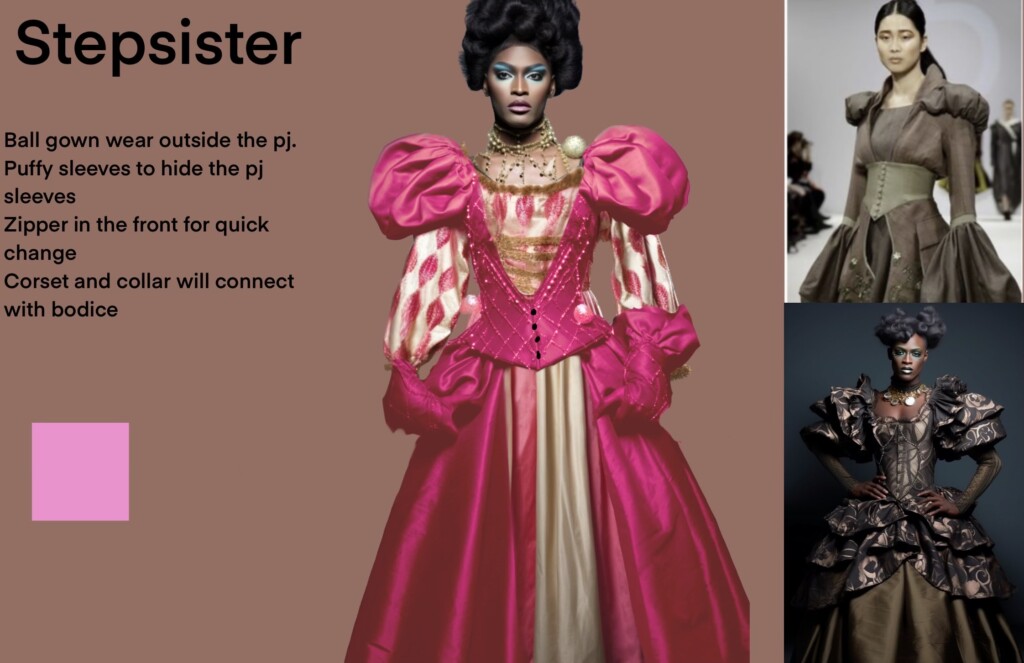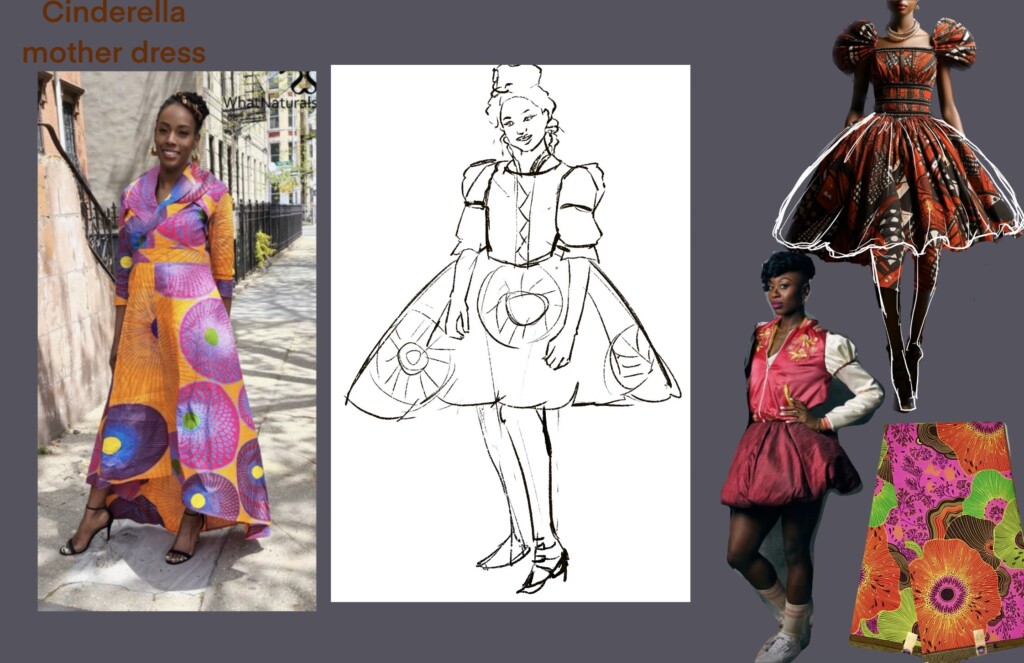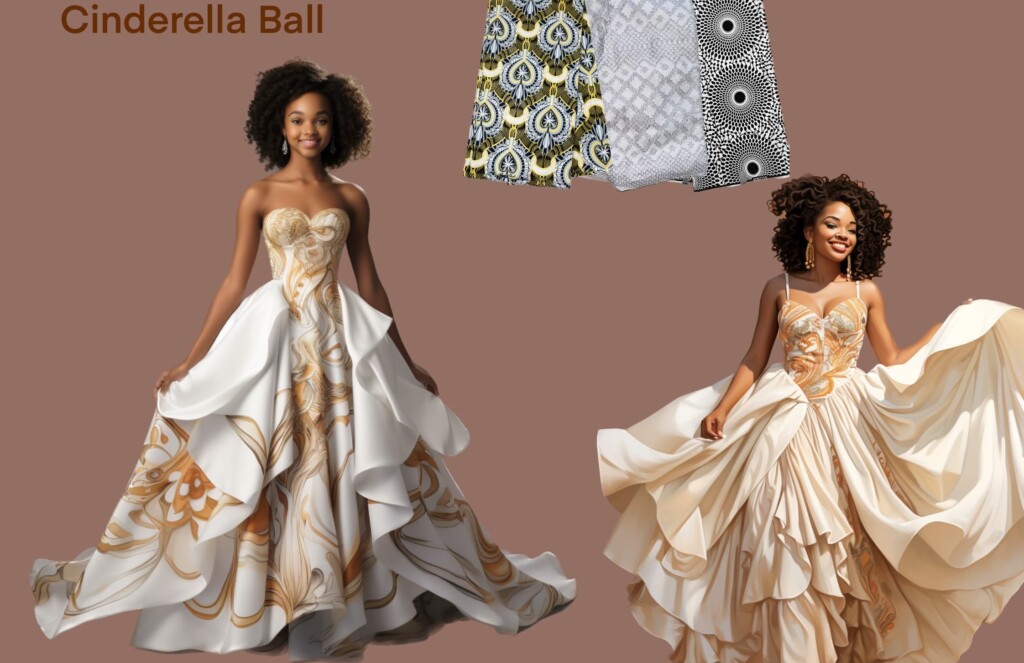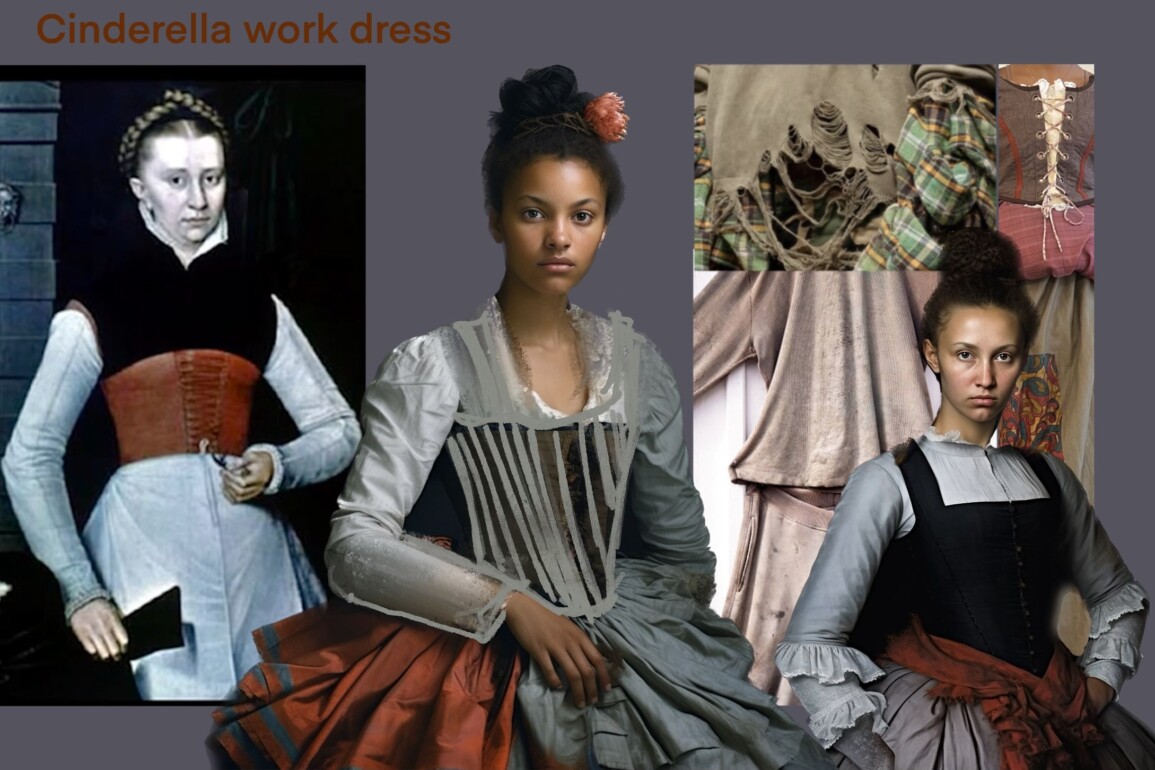By Bea Pritchard, MA Journalism
It’s the perfect time of year for magic in the air as Cinderella returns in her carriage to the stage of the Herbst Theatre. This season is the second year in a row that the Academy of Art University’s costume design program collaborates on the annual holiday show by the African-American Shakespeare Company, with MFA Costume Designer Patric Wang returning to create costumes for the entire show after designing a whimsical transformation dress for Cinderella last year.

The production will feature over 50 designs for the 20 cast members, all of which will follow Patric’s elaborate, Elizabethan-contemporary concept. The production is a large task for Patric to take on by himself, but Costume Design program coordinator Alina Bokovikova believes her student is up to the challenge. While Patric executes his vision, he has assistants like Maggie Whittaker’s production class to help craft some of the original garments he designed for the show.
“It’s exactly why he went to school, right? Finally, he got an opportunity to apply the skills he learned in classes to the professional theatre. Many students, after graduation, work for quite a long time assisting and building the spirit of costume design. Since Patric already studied for five years in our undergraduate program and is now at the graduate level, I feel confident that he has all the necessary artistic and collaborative skills. I’ve seen him grow as a designer since the first class.”
Recalling the challenges thus far of the collaboration, Bokovikova says the hardest part is beginning a project by creating synergy with the artistic director while maintaining the individuality of the designer. She explains that, typically, the costume designer for a production would initiate the ideas and collaborate on the art direction, acting as a manager to oversee the process.
“Time is another objection on Patric’s shoulders. Truly, design for real production is a full-time job, even with professional costume shop assistance. Patric is doing many different tasks at the same time, being a designer, a draper, a stitcher, a craftsman, a shopper, and many others, in addition to taking three classes this Fall semester. He has some help from students in Costume Production class, but it’s mostly his organizational skills and work ethic that make this project progress well.”

Luckily, Patric is not alone in this large undertaking and has the assistance of other MFA costume designers, including one of his close friends, Beatrice Canete, or as she is called more affectionately by him, BC. BC works as the main assistant, sewing mock-ups and attending fittings with Patric to make sure that actors fit comfortably into their costumes. During a fitting for the evil step-mother and step-sisters, BC held the pins for Patric as he explained the vision of the bishop sleeves on the step-sister’s dresses. The two collaborate harmoniously as they exchange words about how to make the sparkly ball gowns mesh well with the under-pieces that the actors will wear during the quick change.
Patric is known for his extravagant and campy design by mixing elements of textile and texture and use of millinery. During his preparation for the show, he used AI to help formulate his renderings.
“I think AI is a wonderful tool to do a quick rendering,” said Patric as he explained his design process. “Actually, I use AI for a few [parts] of my process. I do the research, and then I do Photoshop to figure out what kind of things I want. And then I feed those image[s] to AI to generate something I need.”
The use of AI allowed him to combine elements of drag, Elizabethan collars, and African motifs, but he says that it’s not the end product. It’s another resource, just as the company’s previous costumes in storage are at the designer’s disposal and will be repurposed for this production.

Patric’s designs are a beautiful marriage between all the elements, including adding the “widower who killed her husband” robe paired with a signature stiff collar of the Tudor era and calling inspiration on the grungy, nasty 80s drag style for the stepfamily.
One of the designs includes an eggplant coat that will act as the step-mother’s ball outfit with strips of purple zebra print and dark black lace trim to match her lace black collar, mixing the baroque-inspired puff sleeve with modern heeled boots with dangly charms and a black bustier.
Another design, by contrast, is the fairy godmother’s silver and white number with a hoop skirt adorned with Christmas baubles and a capelet. The coalescence of these designs and the Yoruba-inspired motifs featured in the Prince’s garb show the full development concept that Patric has crafted in tandem with director Sherri Young.
The production will take place from December 15 to December 17 at the Herbst Theatre.
Purchase tickets at african-americanshakes.org/tickets/.



